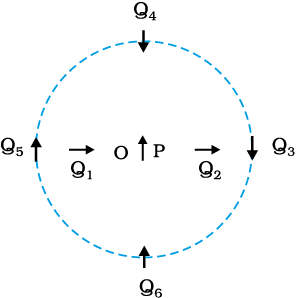The ratio of the magnitudes of the equatorial and axial fields due to a bar magnet of length \(5.0~\text{cm}\) at a distance of \(50~\text{cm}\) from its mid-point is:
(Given, the magnetic moment of the bar magnet is \(0.40~\text{Am}^{2}.\))
1. \(\frac{1}{2}\)
2. \(2\)
3. \(1\)
4. \(\frac{3}{2}\)
Subtopic: Analogy between Electrostatics & Magnetostatics |
72%
From NCERT
To view explanation, please take trial in the course.
NEET 2023 - Target Batch - Aryan Raj Singh
Hints
Links
To view explanation, please take trial in the course.
NEET 2023 - Target Batch - Aryan Raj Singh
The figure shows a small magnetized needle P placed at a point O. The arrow shows the direction of its magnetic moment. The other arrows show different positions (and orientations of the magnetic moment) of another identical magnetized needle Q. Then:

| 1. | In configuration, the system is not in equilibrium. |
| 2. | In configuration, the system is unstable. |
| 3. | In configuration, the system is stable. |
| 4. | configuration corresponds to the lowest potential energy among all the configurations shown. |
Subtopic: Analogy between Electrostatics & Magnetostatics |
To view explanation, please take trial in the course.
NEET 2023 - Target Batch - Aryan Raj Singh
Hints
Links
